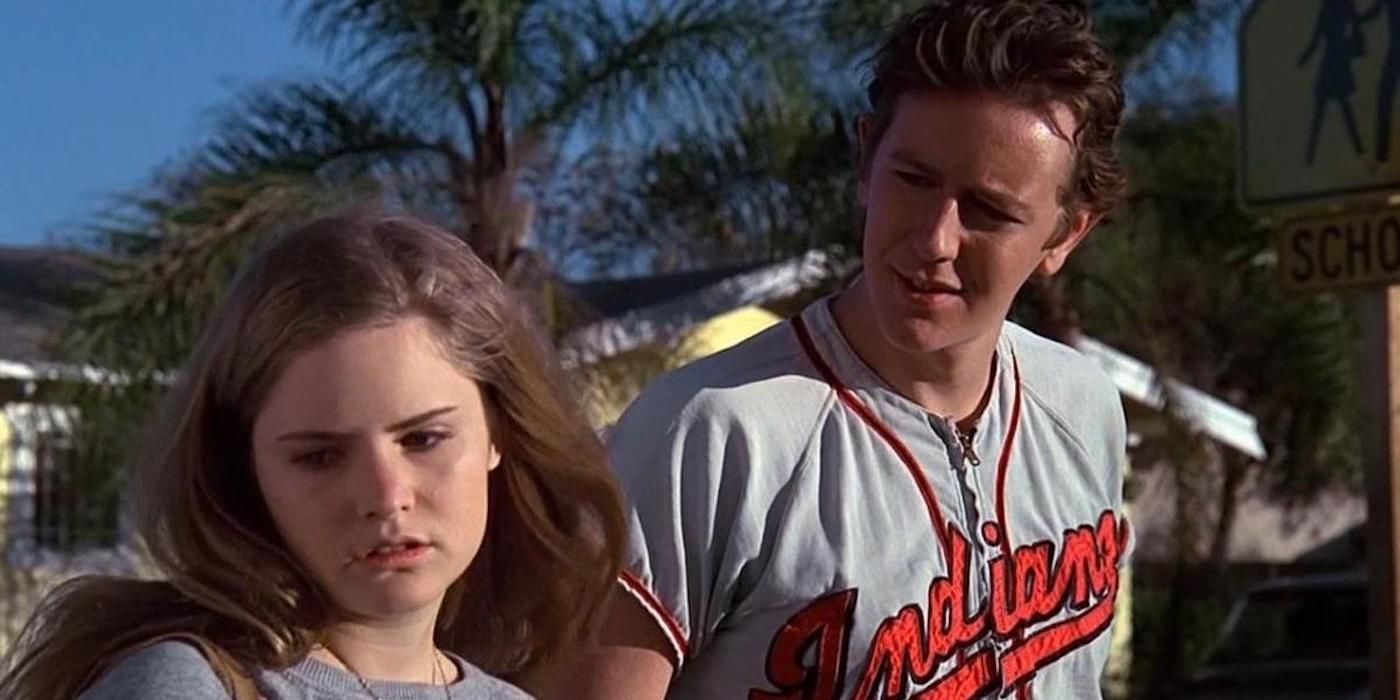The Big Picture
- ‘Fast Times at Ridgemont High’ broke down barriers by portraying female sexuality in a positive and authentic way, unlike other teen sex comedies of its time.
- The film features one of the first forthright and explicit conversations about sex between two female characters, challenging societal taboos and double standards.
- ‘Fast Times’ also tackles the topic of abortion with a lack of sensationalism, presenting it as a fact of life and highlighting the importance of bodily autonomy and women’s rights.
Released in 1982, Fast Times at Ridgemont High was one of many teen sex comedies flooding the market after the success of 1981’s Porky’s. Films like Revenge of the Nerds, The Bachelor Party, and The Last American Virgin were filled with the raunchy exploits of bodacious babes and sex-obsessed dudes. While Fast Times was equally focused on teen sex and female nudity, the film is surprisingly progressive for its time. In more ways than one, the coming of age film broke down numerous barriers through its positive and authentic portrayal of female sexuality in a genre where misogyny was rampant.
Directed by Amy Heckerling, this female perspective was key in delving into a young woman’s experience coming of age. Generally, women in these ‘80s comedies were portrayed as little more than sex objects, yet in Fast Times, they are not only fully formed characters but active participants in the film’s sexual exploits. The film follows a myriad of colorful characters, such as Jeff Spicoli (Sean Penn), the clueless stoner dude, or Brad Hamilton (Judge Reinhold), the popular senior who just can’t catch a break. However, the true central character of the film is Stacy (Jennifer Jason Leigh), a curious 15-year-old who’s eager to learn all about sex from her accomplished friend, Linda (Phoebe Cates), and have a few experiences of her own. Unlike most films of its time, Stacy’s enthusiasm about sex is never shamed or used as a plot point to cast judgment over her character. Fast Times shows that teenage girls are also confused and horny, just like their male counterparts – and there’s absolutely nothing wrong with that.
‘Fast Times at Ridgemont High’ Calls Out Double Standards
Throughout the film, Linda provides Stacy with advice on sex and love from her own wealth of experience. It features possibly one of the first forthright and explicit conversations about sex between two female characters in a film. In this scene, Linda demonstrates oral sex with a carrot in the school cafeteria when Stacy asks how to perform the act. While fairly tame to today’s standards, many viewers took offense to this when the film was first released — even film critic Roger Ebert complained about “the unnecessary detail about sexual functions” and called it “distasteful.” Funnily enough, people at the time found no issues in films like Sixteen Candles which depicts rape culture and taking advantage of drunk women.
Clearly, there’s a double standard here. Nevertheless, such an honest depiction of women discussing sex was groundbreaking. It showed that it shouldn’t be scandalous for a woman to be interested in the mechanics of sex. In fact, it’s natural for girls to talk about these things just the same as boys do. It’s a refreshing change of pace to see two women discussing such topics, particularly in moments when Linda encourages her to make the first move, to pick up the phone first, to be the one calling the shots. This is the crucial difference between Fast Times and other sex comedies of the time — Stacy is the one in control of her sexual journey. Instead of being subjected to the will of other men’s desires, Stacy herself is the pursuer.
Armed with Linda’s sage advice, Stacy undergoes a series of trysts, having sex with two different men and a failed attempt with another. In each scenario, she is the one initiating the encounters. Yes, it’s awkward and embarrassing and cast in an entirely different light than what audiences are used to concerning teenage romance. Still, it perfectly captures the messiness and confusion of a young woman exploring her sexuality. Heckerling depicts Stacy’s story in a way that is not only accurate and relatable but empowers women to embrace their sexuality instead of hiding from it.
‘Fast Times at Ridgemont High’s Discussion of Abortion Was Ahead of Its Time
Perhaps the most revolutionary moment in Fast Times is the straightforward depiction of abortion. While the film surely does promote healthy exploration of one’s sexual interests, it similarly warns us of the consequences of reckless, unprotected sex. After a, frankly, disappointing sexual encounter with classmate Mike Damone (Robert Romanus), Stacy finds out she is pregnant. Being young and unprepared, Stacy decides to terminate the unwanted pregnancy. The sequence is directed with a complete lack of sensationalism. It’s quietly done, without any sort of after-school special melodrama, because that’s how life is. The seriousness of the scene is never dismissed, but Heckerling presents it more as something that happens in life. In an interview with the original author of Fast Times, Cameron Crowe, he divulges that Heckerling said about shooting the scene “you know what, this is life. I want to shoot this like life.” There is no scandal behind Stacy’s decision, it isn’t framed as something immoral or inherently wrong.
If anything, what gets the spotlight in this scene is Damone’s abhorrent behavior towards Stacy. After promising her a ride to the free clinic and to pay half the cost of the abortion, Damone stands her up and leaves her supportive older brother, Brad, to take her in his stead. We do get to see some sweet revenge enacted upon him when Linda spray paints his car with the word “prick” (and “little prick” on his school locker). But it’s not the abortion that is shameful, it’s the complete lack of responsibility and support on Damone’s part. He wanted the abortion, but he chose to let Stacy deal with the emotional and physical effects of that decision on her own while still reaping the benefits. In a notably courageous take from Heckerling, she conveyed in this sequence that men are not exempt from the responsibility behind unwanted pregnancies and subsequent abortions. And those who deny their role in such should be seen as, well, a prick.
Fast Times plays a huge role in battling the stigma surrounding reproductive health care. To this day, the topic of abortion is seen as taboo, especially now with the repeal of Roe v Wade in the U.S. Yet, Heckerling never portrays Stacy’s abortion as a plot point up for deliberation or a debate on morals, Stacy simply decides to do it because she is pregnant and doesn’t want to be. And that’s all anyone needs to know. Fast Times shows us that the matter of bodily autonomy and women’s rights isn’t up for debate. Abortion is, and always will be, a fact of life.
Considering Fast Times was released amidst a slew of teen comedies that encouraged misogyny as a comical gag, the film stands out from the pack with its unusually progressive tone and authentic portrayal of a young woman exploring her sexuality. While the film does still have some questionable moments, there’s no doubt that it was lightyears beyond its time. Films like Fast Times are incredibly important in removing the shame that society has forced upon discussions of female sexuality and reproductive rights. To reiterate Heckerling’s earlier words — “this is life.” Maybe we, as an audience, stand to learn a few things from Fast Times at Ridgemont High.





